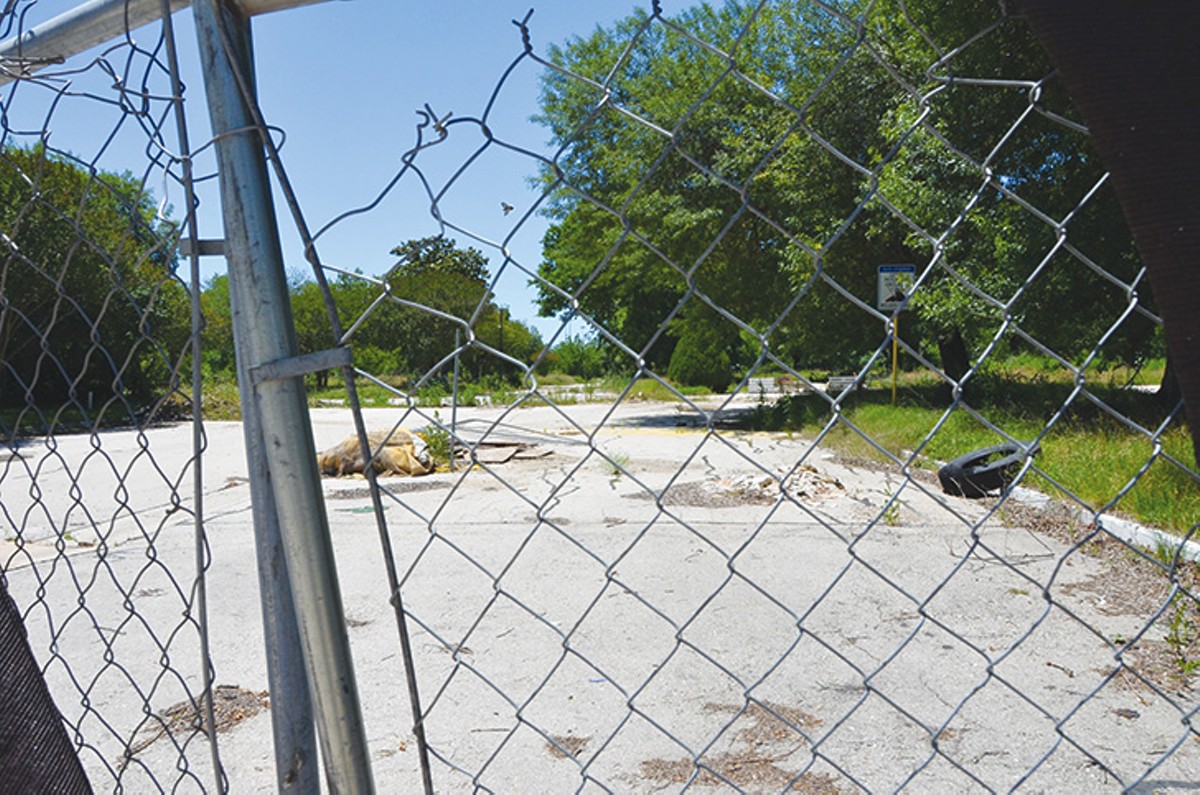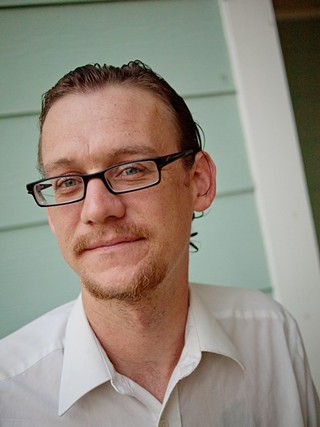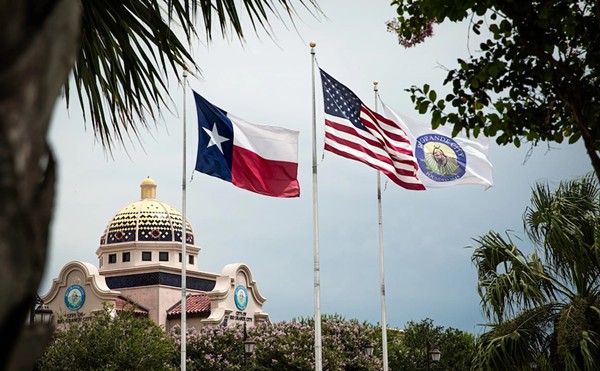A tattered, torn brown tarp covering a locked and bent chain link fence at the former Mission Trails Mobile Home Community flapped in the wind last week.
There were no construction workers. Instead, a mass of overgrown grasses and weeds crept up around the trunks of thick oak trees, encroaching on buckled and cracked concrete on the other side of the fence. No trespassing signs were scattered along the brown wooden fence surrounding the rest of the property at 1515 Mission Road. From the street, it appears that there's no hint of the planned luxury apartment complex that displaced more than 300 people.
In February 2015, the last of the residents of this mobile home park were preparing to leave the community, which was already in disrepair. Today, the future Mission Escondida Luxury Apartments — near Mission Concepción and the Riverside Golf Course — is like a scene from a futuristic movie where nature has reclaimed the remnants of an ancient urban culture.
In May 2014, City Council voted to rezone the land to make way for the $75-million development.
A representative with District 3 Councilwoman Rebecca Viagran's office said last week that the Office of Historic Preservation approved developer White-Conlee's design for the Mission Escondida Luxury Apartments on February 17, adding that the developer is still going through the permitting process before it can start work. White-Conlee and an attorney representing the developer did not respond to requests for comment on the timeline and progress of the apartment complex, which is in a special historic overlay district because of its proximity to Mission Concepción — a World Heritage site. Viagran voted to rezone the property in the district she represents.
But for Margarita Flores, who the San Antonio Current talked to in February 2015 at her well-kept trailer with a few other residents, it's just too hard to revisit her former home of 11 years.
"There are some times I don't want to remember anymore because it makes me cry so much," Flores said. "I'm a big crybaby."
Flores is just one of dozens of interviews from 37 households conducted by the Vecinos de Mission Trails group, which was formed in the fallout of the zoning decision. A case study detailing preliminary displacement findings by principal author Marisol Cortez, who has a doctorate in cultural studies, found that City Council's rezoning decision had four major impacts on former residents: on housing security, health, economic security and social well-being.
Brenda Reyna, who lived at the park for 12 years, meets each one of those major impacts, as did Flores.
"My life changed completely. I'm scared to start over," Reyna said. "I'm traumatized and I suffer from panic attacks. And, right now, I'm on medication and I'm not sure how to fix my life again."
Reyna and her two children, who are aged 14 and 9, are living with family.
Emotionally, Flores is no different than Reyna.
"We fell into a depression. Because it was really hard to take all that time in the cold and the hot," she said, explaining that she and her two adolescent children lived in a trailer without water or electricity for a year, and took on debt she shouldn't have had to bear. "And no one from the City or any of the decision-makers ... worried about the negative impact it would have on us. It was really hard for my two adolescent kids. They had a certain lifestyle and lost it."
While Flores and Reyna have their physical health, not all residents were so fortunate. According to Cortez's report, three residents have died since their displacement, including two elderly women and a man who committed suicide. Nearly half of the interviewees attributed one or more health problems, including the worsening of pre-existing conditions, like diabetes or asthma, to their displacement.
Then there were the economic repercussions, which both Reyna, who lost her job during the crisis, and Flores, who was forced to take out more debt, experienced. They are not alone.
Through interviews, Cortez learned two out of five households interviewed experienced an increased housing burden, either becoming renters or taking on new mortgages, along with respondents reporting that they extinguished savings or tapped into 401Ks. White-Conlee gave families that moved out by January 1, 2015, $7,500 and for those that didn't take the original deal: $5,600. While residents differed on what they thought sufficient financial assistance would be, many stated that the psychological trauma of losing their homes had no price.
However, by far, the most immediate impact of the displacement was housing security. One in four households interviewed by Cortez experienced a period of homelessness, including a disabled veteran in his 60s who lived in his van for three weeks; an elderly couple who lived out of their shop; a couple with two small children who moved into a relative's house, but sometimes slept in parks because of unsafe conditions at that house; and families having to live in motels.
The lesson? Listen to residents, Cortez says. The mobile home park started becoming dilapidated only two to three years before the property was rezoned, contrary to media portrayals, numerous residents have said. That's when the final owner purchased the park. Former residents offered a slew of suggestions for the City in the study, based off of their experience, from providing stronger financial relocation assistance covering the true cost of moving to being engaged earlier in the re-zoning process to better prepare and advocate for themselves.
In closing the case study, Cortez echoes the cries of former residents: San Antonio City Council should learn from what happened at Mission Trails and make sure it never happens like it did in 2014 and 2015 at the park off of Mission Road ever again.
However, for some former residents, forgiving the City won't be easy.
"[I want] the people responsible for this to pay for what they did," Reyna said. "Because my life is not going to be how it was before."




















